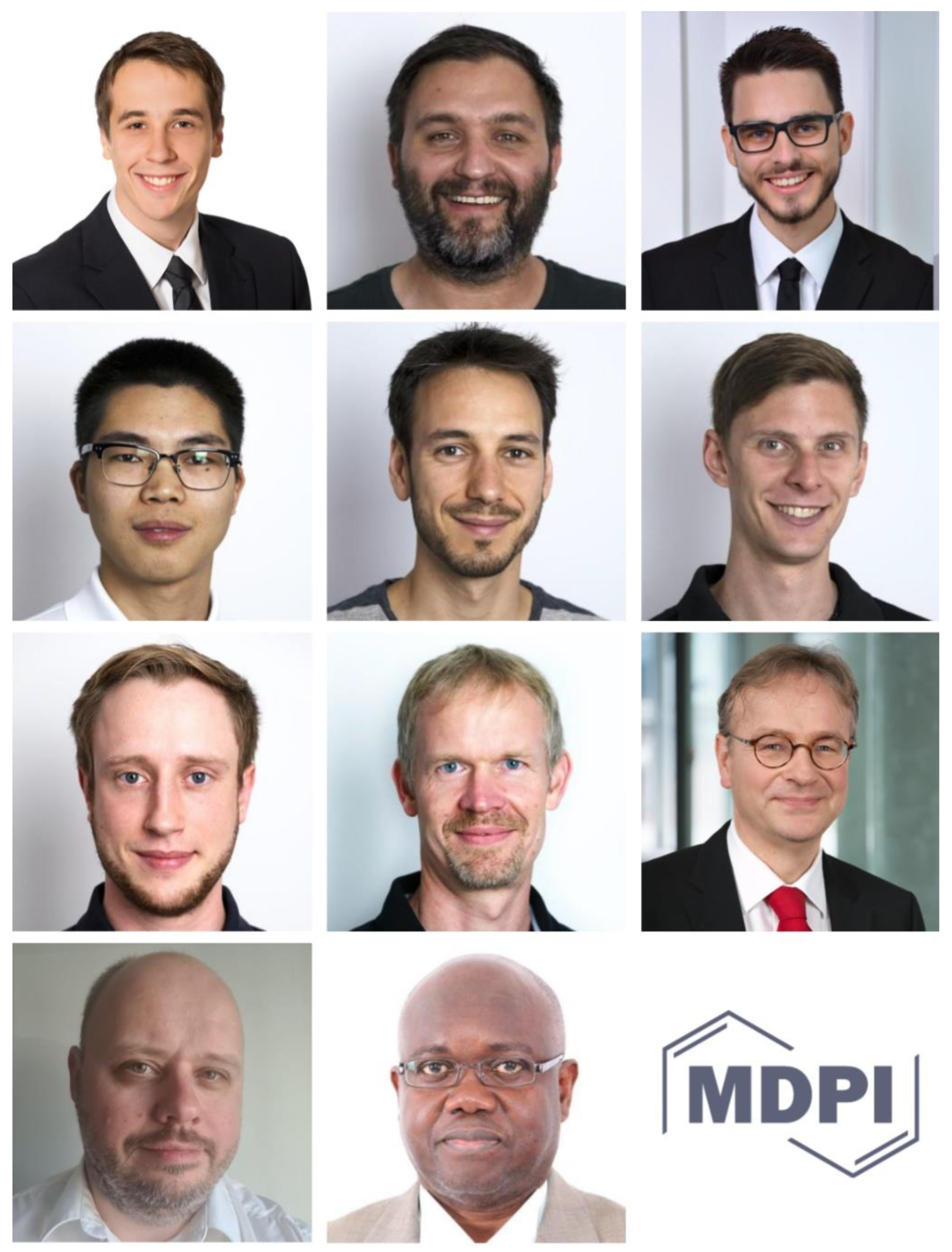Computation is instituting the Best Paper Awards to recognize outstanding papers published in the journal. We are now pleased to announce the winners of the “Computation 2020 Best Paper Awards”.
Papers published in 2020 were preselected by the Computation Editorial Office on the basis of the number of citations and downloads from the website. The winners from the nominations were determined by the Editorial Board together with the Editorial Office. The following two top-voted papers, in no particular order, have won the Computation 2020 Best Paper Awards:
Machine-Learning Methods for Computational Science and Engineering
Michael Frank, Dimitris Drikakis and Vassilis Charissis (
Figure 1)
Computation 2020, 8(1), 15; doi:10.3390/computation8010015
Synopsis of the paper by the authors:
Over the last few decades, the re-kindled fascination in machine learning (ML) has spread into natural sciences and engineering. ML algorithms are increasingly developed for scientific computing-, physics-, and engineering-based processing. ML can assist in processing the terabytes of data produced by experiments and computations. However, extracting meaningful values for scientific and technological properties from such data is not always straightforward and can sometimes be just as time-consuming as the computations or experiments producing them. Traditionally, ML is often associated with signal and image processing, including self-driving vehicles, natural language processing, and optical character recognition. As many sectors invest significantly in ML to improve their products and services, ML algorithms have become ubiquitous in many scientific and technological areas. Our paper provided a comprehensive review of the state of the art in ML for computational science and engineering:
We discussed how ML could speed up or improve the quality of simulation techniques, such as computational fluid dynamics, molecular dynamics, and structural analysis.
We explored the ability of ML to produce computationally efficient surrogate models of physical processes-driven applications that circumvent the need for the more expensive simulation techniques entirely.
We showcased how ML can process large amounts of data, using examples from many diverse scientific fields, such as engineering, medicine, astronomy, and computing, and the emerging trend of using ML for more realistic and responsive virtual reality applications.
We believe that despite ML’s success and progress over recent years, it is still in its infancy, as many more computational challenges, such as accuracy and uncertainty, still need to be addressed.
Figure 1.
Michael Frank, Dimitris Drikakis, and Vaassilis Charissis (from left to right).
Figure 1.
Michael Frank, Dimitris Drikakis, and Vaassilis Charissis (from left to right).
Evaluation of a Near-Wall-Modeled Large Eddy Lattice Boltzmann Method for the Analysis of Complex Flows Relevant to IC Engines
Marc Haussmann, Florian Ries, Jonathan B. Jeppener-Haltenhoff, Yongxiang Li, Marius Schmidt, Cooper Welch, Lars Illmann, Benjamin Böhm, Hermann Nirschl, Mathias J. Krause and Amsini Sadiki (
Figure 2)
Computation2020, 8(2), 43; doi:10.3390/computation8020043
Synopsis of the paper by the authors:
The intake jet over the valves of an internal combustion (IC) engine dominates the generation of complex turbulent structures desirable for mixing, ignition, and combustion processes, with a high impact on engine efficiency and pollutant emissions. However, the accurate prediction of these flow phenomena in IC engines challenges numerical and experimental investigations due to a wide range of length and time scales. This paper compares two open-source, near-wall-modeled (NWM) large eddy simulation (LES) approaches. The investigation focuses on prediction accuracy, computational cost, and ease of use to predict high Reynolds number wall-bounded turbulent flows relevant to IC engines. OpenFOAM, based on the finite volume method, and OpenLB, an implementation of the lattice Boltzmann method (LBM), are compared to a stationary engine flow bench experiment by utilizing a high-speed particle image velocimetry measurement. The validation covers a detailed error analysis of the velocity field and grid studies to examine the performance of the two solvers. To meet this aim, the paper proposes a new wet-node LBM wall function based on extrapolation. For the tested configurations, OpenLB is around 32 times faster than OpenFOAM. This potential of NWM-LES in LBM for the accurate simulation of IC engine-relevant complex turbulent flows enables the performance of overnight calculations that previously took weeks.
Figure 2.
Marc Haussmann, Florian Ries, Jonathan B. Jeppener-Haltenhoff, Yongxiang Li, Marius Schmidt, Cooper Welch, Lars Illmann, Benjamin Böhm, Hermann Nirschl, Mathias J. Krause, and Amsini Sadiki (from left to right and from up to down).
Figure 2.
Marc Haussmann, Florian Ries, Jonathan B. Jeppener-Haltenhoff, Yongxiang Li, Marius Schmidt, Cooper Welch, Lars Illmann, Benjamin Böhm, Hermann Nirschl, Mathias J. Krause, and Amsini Sadiki (from left to right and from up to down).
These two papers have surely been valuable contributions to Computation. We warmly congratulate both teams on their accomplishments and wish them continued success.





